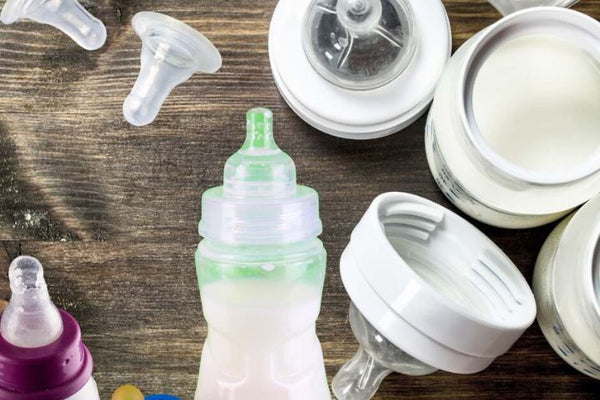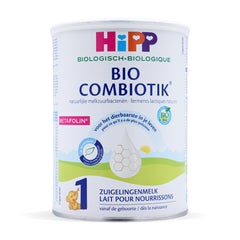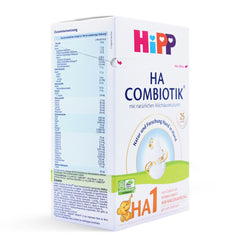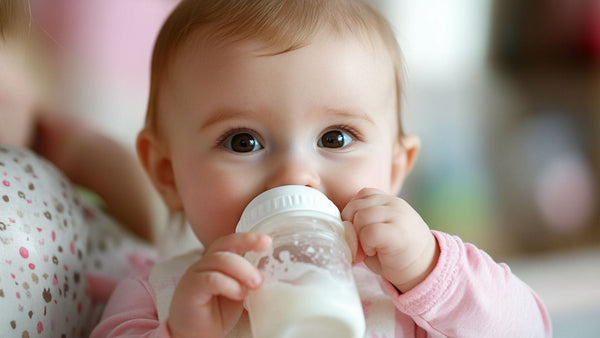Bottle Nipple Sizes Explained
38 hours of research 4 minute read

Feeding your little one involves more than just selecting the right formula or breast milk; the size of their bottle nipple is a crucial factor. In this comprehensive guide, we'll combine insights from experts Nicole Harris and Mahizul Islam to provide an in-depth understanding of baby bottle nipple sizes. Additionally, we'll touch upon popular brands like Dr. Brown, Avent, Tommee Tippee, and more, exploring their unique offerings.
Why Nipple Size Matters for Baby’s Feeding
Choosing the right nipple size for your baby's bottle is paramount. It directly impacts the flow rate of milk or formula, influencing your baby’s feeding experience and overall comfort.
Comfort:
Different babies have distinct sucking abilities. Using an inappropriate nipple size can lead to discomfort during feeding. A small nipple can make feeding difficult, while a large one can cause choking.
Pace of Feeding:
The flow rate from the nipple significantly impacts how quickly your baby consumes their feed. Newborns and younger babies usually require a slower flow to prevent overfeeding and digestion issues.
Development of Oral Skills:
The right nipple size aids in the development of your baby’s oral skills. Gradually transitioning to a faster flow as your baby grows supports the coordination of sucking, swallowing, and breathing.
To assist parents in selecting the appropriate nipple size, baby bottle manufacturers often provide charts indicating the recommended age range for each size. This ensures your baby uses the right nipple size as they grow.
Baby Bottle Nipple Sizes Chart by Age
Here is a baby bottle nipple size chart:
| Nipple Size | Age Range | Flow Rate |
|---|---|---|
| Slow Flow | 0-3 months | Ideal for newborns |
| Medium Flow | 3-6 months | Suitable for most babies |
| Fast Flow | 6+ months | Suitable for older babies |
Newborn Nipple Size
Newborns have unique feeding needs, and using an inappropriate nipple size can cause difficulties. Newborn nipples are designed for the first few months, offering:
- Slow Flow: Mimics the natural flow of breast milk.
- Satisfying Suckling: Resembles the mother’s breast for a natural suckling motion.
- Reduce Colic and Gas: Prevents excess air intake, reducing colic and gas discomfort.
- Easy Transition: Facilitates smooth switching between breast and bottle.
When to Transition to a Larger Size:
- Increased Feeding Time
- Frustration or Agitation
- Difficulty with Suckling
- Age and Development (around 3-4 months)
Size 0 vs Size 1 Nipples
Understanding the differences between Size 0 and Size 1 nipples is crucial for a comfortable feeding experience.
Differences:
- Flow Rate: Size 0 for newborns with a slower flow; Size 1 for 0-3 months with a faster flow.
- Nipple Shape: Size 0 is smaller and rounder; Size 1 may have a wider shape.
- Age Recommendation: Size 0 for newborns; Size 1 for 0-3 months or signs of dissatisfaction.
Switching to Size 1 Nipples:
- Restlessness during feeding
- Increased Feeding Time
- Excessive Coughing or Choking
Gradual introduction is crucial, observing your baby's response and adjusting based on comfort.
Size 2 Nipples
Designed for babies aged 3 to 6 months, Size 2 Nipples offers:
- Increased Flow: Larger hole for a faster flow.
- Mimics Natural Feeding: Closer to the shape of a mother’s nipple.
- Minimizes Feeding Time: Efficient feeding for growing babies.
- Reduces Gas and Fussiness: Prevents excess air intake.
Signs Baby is Ready for Size 2 Nipples:
- Frustration during feeding
- Increased Sucking Strength
- Difficulty with Sleep
Observe feeding patterns and consult with a pediatrician if unsure.
Size 3 Nipples
For babies around 6 months and up, Size 3 nipples offer:
- Faster Flow: Larger opening for efficient feeding.
- Mimics Breastfeeding: Simulates the flow rate of breast milk.
- Reduced Colic and Spit-Up: Anti-colic design for comfort.
Signs Baby is Ready for Size 3 Nipples:
- Increased Fussiness
- Difficulty with Suction
- Rapid Feeding
Adapt to individual needs, consulting a pediatrician for guidance.
Variable Flow Nipples
When and How to Introduce:
- Designed for babies transitioning from slower flow (around 3-6 months).
- Gradual introduction, observing baby's cues for readiness.
Benefits and Considerations:
- Benefits include a controlled pace and suitability for combination feeding.
- Consider individual baby needs and consult professionals if unsure.
Tips for Selecting the Right Nipple Size
Consider factors like age, flow rate, baby’s feeding style, and bottle type when choosing nipple size. Avoid common pitfalls such as using the wrong size, ignoring baby’s cues, and not checking for wear and tear. Regularly monitor and adjust nipple size based on your baby’s progress.
Soft nipples play a crucial role in ensuring a comfortable and natural feeding experience for your baby. These specialized bottle nipple are designed with the delicate nature of an infant's mouth in mind, providing several benefits that contribute to both the baby's well-being and the ease of feeding.
- Comfortable Latch: Soft nipples mimic the suppleness of a mother's breast, promoting a comfortable latch for the baby. This is especially significant during the early stages of bottle feeding when establishing a secure latch is essential.
- Natural Feel: The softness of the nipple closely resembles the texture of a mother's breast, creating a more natural feel for the baby. This feature helps ease the transition between breastfeeding and bottle feeding, ensuring a smoother experience for both the baby and the parent.
- Gentle on Gums: Babies, particularly newborns, have tender gums and mouths. Soft nipples provide a gentle touch, reducing the risk of discomfort or irritation during feeding. This becomes especially crucial during the teething stages.
- Responsive to Baby's Sucking Reflex: Soft nipples respond well to a baby's sucking reflex, allowing them to control the flow of milk more naturally. This responsiveness helps avoid overfeeding and allows the baby to feed at their own pace.
- Promotes Relaxation: The soft and pliable nature of these nipples contributes to a more relaxed feeding environment. Babies can comfortably enjoy their meals without unnecessary stress on their gums or jaw.
When selecting baby bottles, consider opting for those equipped with soft nipples, as they provide an excellent combination of comfort, functionality, and ease of use. Always ensure that the nipple is intact, free from damage, and suitable for your baby's age and feeding preferences. Soft nipples are a valuable component in creating a positive and nurturing feeding experience for your little one.
Dr Brown Nipple Levels, Avent, Tommee Tippee, and More
Dr. Brown's Nipple Levels:
Dr. Brown's bottles come with different nipple levels to accommodate various flow rates. Level 1 is suitable for newborns, while higher levels provide faster flow for older babies.
Avent Nipple Sizes:
Avent offers different nipple sizes, including Newborn, Slow, Medium, and Fast Flow. These cater to various age groups and feeding preferences.
Tommee Tippee Nipple Sizes:
Tommee Tippee provides nipples with different flow rates, starting from Slow Flow Nipple for newborns to Medium and Fast Flow for older babies.
Below is a simple chart comparing Philips Avent and Tommee Tippee nipple sizes:
| Nipple Size | Philips Avent | Tommee Tippee |
|---|---|---|
| Slow Flow | Newborns - Mimics breastfeeding | Newborns - Slow flow for a natural pace |
| Medium Flow | 3-6 months - Suitable for most babies | 3-6 months - A balance between flow and comfort |
| Fast Flow | 6+ months - Suitable for older babies | 6+ months - Faster flow for efficient feeding |
Note: Always refer to the specific charts provided by the manufacturers for the most accurate and up-to-date information. Individual baby needs may vary, and it's essential to monitor your baby's cues for any necessary adjustments.
Glass Baby Bottles, Evenflo Bottles, NUK Bottles, Evenflo Balance Bottles
Glass Baby Bottles:
Glass baby bottles are an eco-friendly option. Brands like Evenflo and NUK offer glass bottles with various nipple options.
Evenflo Bottles:
Evenflo bottles, including their Balance Bottles, come with different nipple sizes suitable for newborns to older infants.
NUK Bottles:
NUK bottles provide a range of nipples, ensuring a comfortable feeding experience for babies of different ages.
Evenflo Balance Bottles:
Evenflo's Balance Bottles are designed with a unique nipple shape to promote a natural latch and comfortable feeding experience.
Choosing the Right Nipple Size
Choosing the right nipple size is crucial for your baby's comfort, development, and overall feeding experience. Tailor your choice based on your baby's age, developmental stage, and individual preferences. Regularly monitor your baby's cues and adjust the nipple size as needed. For personalized guidance, consult with a pediatrician or lactation consultant.
Tailoring the nipple size to your baby’s needs ensures a positive feeding experience, promoting both their growth and well-being.
Note: Always follow the guidelines provided by the respective bottle and nipple manufacturers for the best results. The information provided here is for general guidance, and individual baby needs may vary.
Most Popular Baby Formulas for Bottle Feeding
Organic Life Start is committed to providing accurate, reliable, and trustworthy information to parents and caregivers. We carefully choose credible sources and follow a meticulous fact-checking process to uphold the highest standards in infant nutrition and parenting advice. To learn more about our dedication to accuracy, please explore our editorial guidelines.
Link To Sources











Renee -
I’d love to hear more about how variable‑flow or soft‑nipple options compare to the standard size progression — like when it’s best to introduce them and what signs to look for that your baby is truly ready for a different flow!
Ocean -
November 24, 2025
I read about paced bottle‑feeding as a way to manage flow, but I’m not sure if it’s worth switching from just choosing a slower vs faster nipple. Anyone have firsthand experience with paced feeding helping reduce choking, gagging, or overfeeding?
Watson -
October 30, 2025
How do you know if your baby’s constant gagging, coughing, or dribbling during feeds is just a flow mismatch with the nipple or a sign of something more serious that needs medical attention? When does it cross the line from “adjust the nipple size” to “time to consult the pediatrician”?